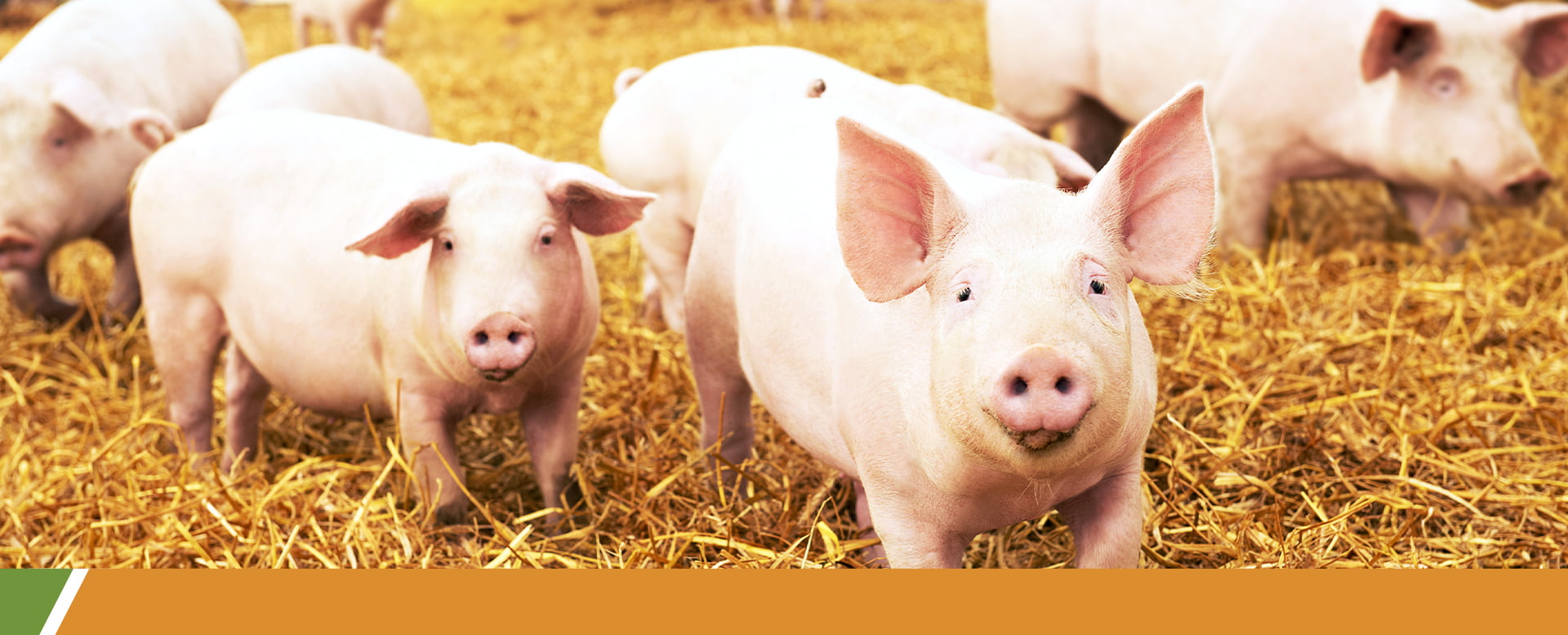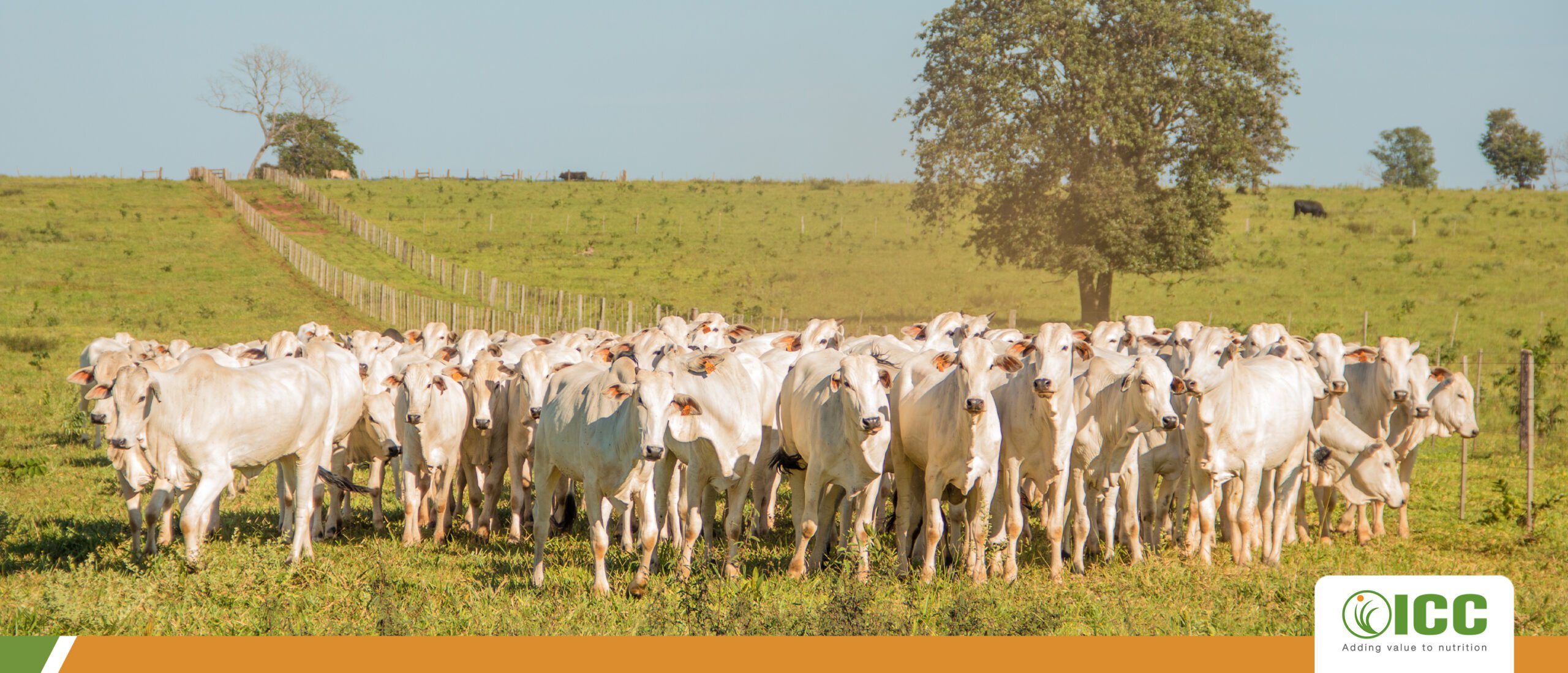
By: Melina Bonato, Ph.D. Global R&D and Technical Manager, ICC Brazil &
Céline Coutolleau European Technical Supervisor, ICC Brazil
The yeast ingredients have been widely used in pet food for decades, mainly as a source of protein and other nutrients (like complex B vitamins) and as a palatant enhancer. However, the yeast has typical components in its structure, which compose the cell wall: β-glucans and mannan oligosaccharides (MOS). The concentration and availability of these carbohydrates will vary depending on the type of yeast (Saccharomyces cerevisiae or others) and the fermentation process (brewers, bakers, molasses, distillers’ grains, etc.), as well as the following technologies that are applied to get different final products (inactive dried, autolyzed, hydrolyzed, etc.).
B- glucans
The β-glucans in the yeast cell wall are β-1,3 and 1,6-glucans linkage, different from those found in cereals (like oat, barely bran, and others) that are β-1,4 and 1,3-glucans. This physicochemical difference will impact their biological function because branched or linear β-1,4-glucans have limited activity (majority proportion in vegetable cells), while the β-1,3-glucans with an additional branching have the highest immunomodulatory effect (PETRAVIĆ-TOMINAC et al., 2010). Thus, the β-glucans from Saccharomyces cerevisiae cell wall consist mainly of β-1,3-glucans linked in a central backbone with branches of β-1,6-glucans of various sizes (PETRAVIĆ-TOMINAC et al., 2010) which in turn are linked with the mannan proteins, serving as an anchor for the structure and integrity of the mannoprotein layer (MAGNANI & CASTRO-GÓMEZ, 2008).
MOS
The manno glucans complex will maintain the primary stability of the MOS as it is and its insolubility in water. This is crucial for the biological function of it in the animal’s intestine. The MOS’s main known mode of action is to serve as a binding site for pathogenic bacteria, avoid their adhesion to the intestinal epithelium, and further colonization and infection (MORAN, 2004). Bacteria like Salmonella and E. coli utilize the type 1 fimbria, a mannose-specific lectin, to recognize glycoproteins in the enterocyte’s surface (MORAN, 2004). Thus, this mechanism controls and reduces bacterial enteric load and infection.
MOS is widely called and classified as prebiotic in the literature; however, it could be possibly misunderstood since the definition of a prebiotic is “a non-digestible food ingredient that beneficially affects the host by selectively stimulating the growth and/or activity of one or a limited number of bacteria in the colon, and thus improves host health” (definition by Glenn & Roberfroid, 1995). Later on, the concept was updated by the International Scientific Association of Probiotics and Prebiotics (ISAPP) as: “a selectively fermented ingredient that results in specific changes in the composition and/or activity of the gastrointestinal microbiota, thus conferring benefit(s) upon host health.” According to ISAPP, the most studied and used prebiotics are inulin, fructooligosaccharides (FOS), galactooligosaccharides (GOS), and, more recently, human milk oligosaccharides (HMOs).
Benefits of Pet food
Studies with dogs from the literature have reported the benefits of MOS supplementation related to changes in the gut microbiota (significantly enhancing the beneficial bacteria and decreasing the pathogenic), digestive system (gut integrity, reduction of fecal odor, and improving the stool quality), modulating the immune system responses (phagocytic activity, interleukins, immunoglobulins), among others (SWANSON et al., 2002; GRIESHOP et al., 2004; MIDDELBOS et al., 2007; PAWAR et al., 2017; THEODORO et al., 2019). However, many studies report using a yeast cell wall product (a combination of β-glucans and MOS) or don’t completely clarify the composition of the MOS product used. This could lead to a misinterpretation of MOS vs. β-glucans mode of action and benefits.
The body does not synthesize β-glucans, so they must be recognized by the immune system, inducing immune responses (PETRAVIĆ-TOMINAC et al., 2010), called immunomodulators. The process starts with the recognition by the phagocytic cells (macrophages, monocytes, dendritic cells, neutrophils, natural killers) with a toll-like receptor on their cell surface, which recognizes microbial patterns and induces an immediate innate immune response. The structure that allows recognition by the immune system is the pathogen-associated molecular patterns (PAMPs), and among the best-known PAMPs are β-glucans, which trigger responses to protect the host against pathogen invasion, characterizing innate immunity (MAGNANI & CASTRO-GÓMEZ, 2008). After this activation and phagocytosis, the phagocyte presents a processed antigen fragment. It stimulates a chain response by releasing pro-inflammatory cytokines and activating the production, release, and mobilization of additional phagocytic cells (produced in the bone marrow) (PETRAVIĆ-TOMINAC et al., 2010), phagocytic activity, and other cell-mediated immune responses.
This immunomodulatory effect means training the innate immune system and preparing it for a faster, better, and more intelligent response to challenges (PETRAVIĆ-TOMINAC et al., 2010). The practical result is to reduce the inflammation process (costing less for the metabolism), control of infections and their consequences (oxidative stress, cell damage, etc.), and improve immunoglobulins and antibody production (over specific pathogens/antigens or vaccine titers).
Several purified and concentrated β-glucans products are available, and their immunomodulatory effect has been proven through the years, as well when β-glucans are complexed with MOS in the yeast cell wall. These benefits seem to be essential for puppies (due to the stage of the immune system and intestinal tract development, plus the vaccine intense period), senior animals (due to the immune system’s susceptibility in advanced ages), animals with intestinal problems or diseases that may cause depression in the immune response.
Conclusion
MOS and β-glucans are key components of yeast products. Their composition, concentration, and availability are closely related to the kind of yeast they are coming from. MOS and β-glucans benefit Pet food diets due to their interesting properties to balance the microbiota, preserve gut health, and modulate the immune response. Having a deeper understanding of those key properties helps valorize them better in Pet food applications and enables their tailored use to address specific challenges companion animals face, such as growth, reproduction, and recovery.
Pesquisa e Desenvolvimento - Ração mais Palatável
A ICC Brazil produziu um material para profissionais que querem ampliar seu conhecimento técnico sobre a importância da palatabilidade, nutrição animal, e de como isso reflete no fortalecimento do sistema imunológico dos pets. O conteúdo traz informações baseadas em experimentos científicos, realizados in vivo, e apresenta resultados comprovados e aprovados pela comunidade cientifica.
Investigación Y Desarrollo – Alimento Más Palatable
ICC Brazil ha producido un material para profesionales que desean ampliar su conocimiento técnico acerca de la importancia de la palatabilidad, la nutrición animal, y de cómo eso se refleja en el fortalecimiento del sistema inmunitario de los pets. El contenido proporciona información basada en experimentos científicos realizados in vivo, y presenta resultados comprobados y aprobados por la comunidad científica.
Research and Development - More palatable feed
ICC Brazil developed a material for professionals who wish to broaden their technical knowledge on the importance of palatability and animal nutrition, and how this reflects on strengthening the immune system of pets. The content brings information based on scientific in vivo experiments and presents proven and attested results.
References
Grieshop, C.M, et al. Gastrointestinal and immunological responses of senior dogs to chicory and mannan-oligosaccharides. Arch Anim Nutr. 2004 Dec;58(6):483-93. doi: 0.1080/00039420400019977.
International Scientific Association of Probiotics and Prebiotics (ISAPP). Consulted on September 19th, 2023. https://isappscience.org/for-scientists/resources/prebiotics/
Magnani, M. & Castro-Gómez, R.J.H. β-glucans from Saccharomyces cerevisiae: constitution, bioactivity and obtaining. Semina: Ciências Agrárias, Londrina, v. 29, n.3, p. 631-650, jul./set. 2008.
Middelbos, I.S. et al. A dose-response evaluation of spray-dried yeast cell wall supplementation of diets fed to adult dogs: effects on nutrient digestibility, immune indices, and fecal microbial populations. J Anim Sci. 2007 Nov;85(11):3022-32. doi: 10.2527/jas.2007-0079.
Moran, C.A. Functional components of the cell wall of Saccharomyces cerevisiae: applications for yeast glucan and mannan. In book: Nutritional biotechnology in the feed and food industries, Nottingham University Press, pp.283-296, 2004.
Pawar, M.M. et al. Effect of dietary mannanoligosaccharide supplementation on nutrient digestibility, hindgut fermentation, immune response and antioxidant indices in dogs. J Anim Sci Technol. 2017 May 11;59:11. doi: 10.1186/s40781-017-0136-6.
Petravić-Tominac, V. et al. Biological effects of yeast β-glucans. Agriculturae Conspectus Scientificus, n. 75, v. 4, 2010.
Swanson, K.S. et al. Supplemental Fructooligosaccharides and Mannanoligosaccharides Influence Immune Function, Ileal and Total Tract Nutrient Digestibilities, Microbial Populations and Concentrations of Protein Catabolites in the Large Bowel of Dogs. J Nutr. 2002 May;132(5):980-9. doi: 10.1093/jn/132.5.980.
Theodoro, S.S. et al. Effects of the solubility of yeast cell wall preparations on their potential prebiotic properties in dogs, PLoS ONE 14(11): e0225659, 2019. https://doi.org/10.1371/journal.pone.0225659.
Posted in 18 October of 2023


